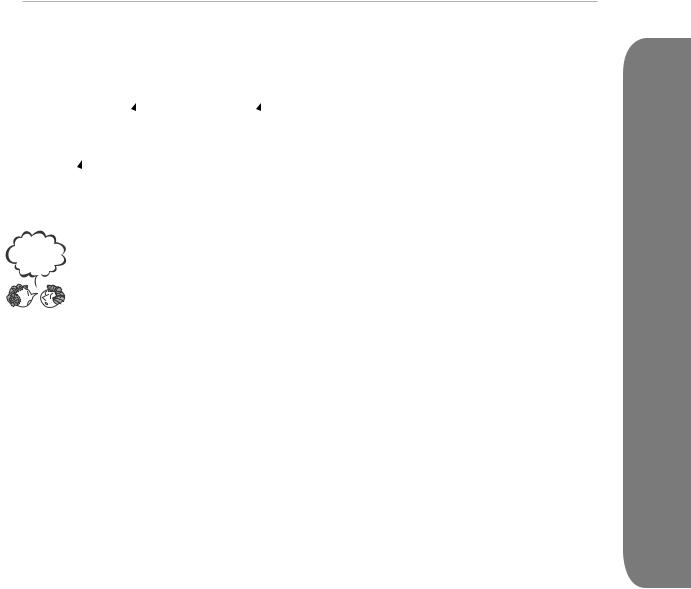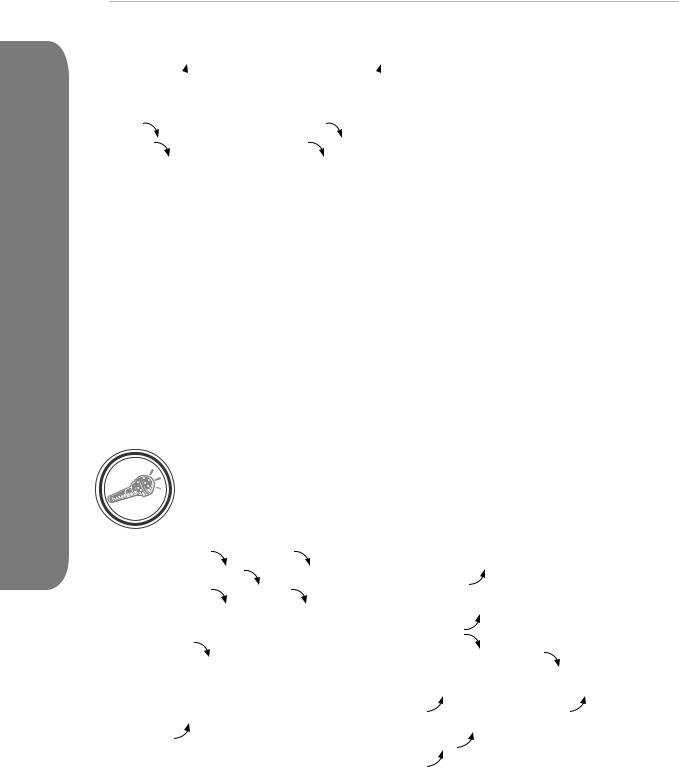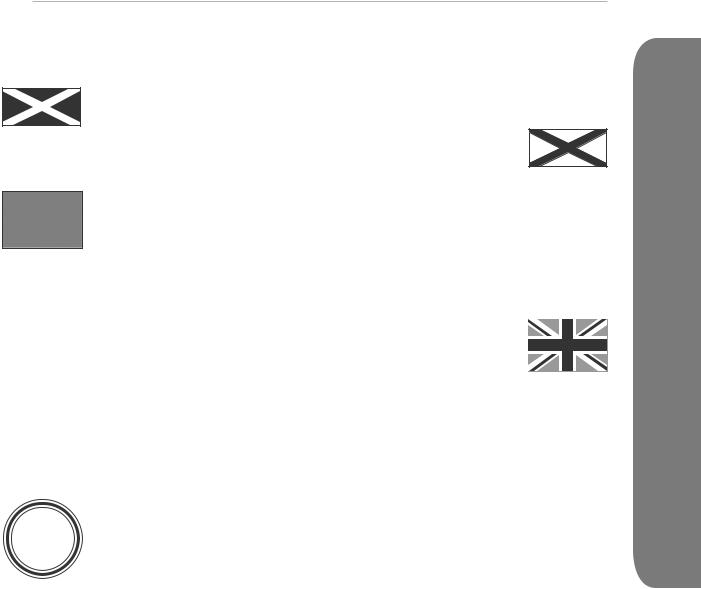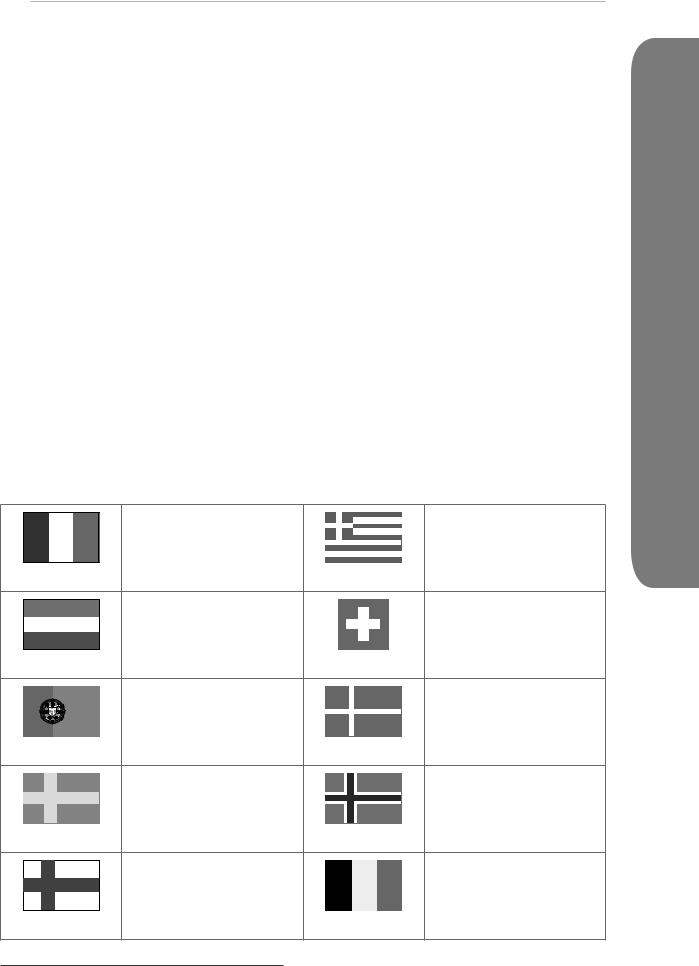
Unit_1_Yastrebova
.pdf
UNIT 1
ACROSS
THE ENGLISHSPEAKING WORLD

Chapter 1. Unit 1. Across the English Speaking World
 Английский язык для международников и регионоведов. Часть I
Английский язык для международников и регионоведов. Часть I
IN UNIT 1 YOU LEARN: |
LANGUAGE FOCUS |
to introduce and greet people; |
past tenses |
to say hello and good-bye |
articles with countable nouns |
to say «пожалуйста» in English |
some, any, no |
to speak about past events |
phrasal verb “go” |
to read faster |
“nationality” words |
to look for information |
|
SPEAKING 1
INTRODUCING AND GREETING PEOPLE
THE BASICS OF SUCCESSFUL COMMUNICATION. A FEW WORDS ON INTONATION
Intonation is more important for communication than the correct pronunciation of individual sounds. The same phrase may have a very different meaning depending on how you say it.
Compare:
1.‘Thank you very  much: the speaker is grateful for what you’ve done or given him/her.
much: the speaker is grateful for what you’ve done or given him/her.
2.‘Thank you  very much: the speaker is truly grateful for what you’ve done or given him/her.
very much: the speaker is truly grateful for what you’ve done or given him/her.
3.In polite refusals we might say: Thank you ‘very  much, but I’d rather not.
much, but I’d rather not.
I.INTRODUCING AND GREETING PEOPLE.
A:Ms1 .  Blake,
Blake,  ‘let me intro’duce Mr.
‘let me intro’duce Mr.  Jones. ||
Jones. ||
|
|
|
|
‘may I intro’duce Mr. |
Jones. || |
|||
FORMAL |
Ms. Blake: ‘How do you |
do? || |
|
|
||||
Mr. Jones: ‘How do you |
do? || ‘Pleased to |
meet you. |
||||||
|
||||||||
|
|
|
|
OR |
|
|
|
|
|
A: ‘Let me intro |
duce myself. || I am ‘John |
Thompson. || |
|||||
|
B: ‘How do you |
do? || I am ‘Kate |
Martin. || |
|
||||
|
A: ‘How do you |
do? |
|
|
|
|||
|
|
|
|
|
|
|||
NEUTRAL |
A: |
Jane, ‘meet ‘Tanya |
Smith. || |
|
|
|||
B: He |
llo, Tanya. || ‘Nice / ’pleased to meet you. |
|||||||
|
|
|
|
|
|
|
||
|
|
|
|
|
|
|
|
|
INFORMAL |
A: |
Hi, |
I am |
Jack. || |
|
|
|
|
B: |
Hi, |
I am |
Sasha. |
|
|
|
||
|
|
|
|
|
|
|
||
HOW ARE YOU?
neutral = inquiry about one’s health
informal = how are things? (как дела?). How are you doing? (как поживаете?)
1 [miz]
16

 Английский язык для международников и регионоведов. Часть I
Английский язык для международников и регионоведов. Часть I
Compare:
1.A: ‘How are  you? ||
you? ||
B:I am  fine,
fine, 
 thank you. || And
thank you. || And  you?
you?
2.A: ‘How are  things?
things?
B:‘Fine,  thanks. || ‘What about
thanks. || ‘What about  you?
you?
A:  Fine. / ’Not
Fine. / ’Not  too bad.
too bad.
PAIRWORK
Make up dialogues suitable for the following situations:
1.Bill Clinton and Hillary Rodham met in Yale law library: they were staring at each other until Hillary broke the silent flirtation and marched over to Bill.
Hillary:
Bill:
2.At a diplomatic reception. The Russian ambassador introduces the new attaché,
Boris Ivanov, to the guests, the British attaché, Mr. Hewitt-Packard and his wife Joanne, among them.
Russian Ambassador: British Attaché:
3.At a birthday party given by your friend. You are introduced to your former classmate. (use: we’ve met…)
4.At a business lunch. Mr. Bean, a businessman interested in exporting snow from Alaska, meets a Russian official from the Ministry for Foreign Economic Relations Mr. Razin. Mr. Bean’s business partner Ms. Shilova is to perform the introductions.
5.On a blind date. Cynthia asked her friend Bunty along on her date with Eric. Eric said he’d bring a friend for Bunty. Bunty has met neither of the boys.
Cynthia: Eric :
Malcom (Eric’s friend): Bunty:
6.At Sheremetyevo airport. Natalia Gromova, an official from the Ministry of Culture, meets a UNESCO delegation (Ms. Seymour, head of the delegation, Ms. O’Connor, Mr. McPherson).
ПОЖАЛУЙСТА: PLEASE, THANK YOU, ETC.
Situation 1. (At the table): You are offered something. Your answer:  Yes,
Yes,  please. Or
please. Or  Thank you.
Thank you.
‘No,  thank you.
thank you.
Chapter 1. Unit 1. Across the English Speaking World
17

Chapter 1. Unit 1. Across the English Speaking World
 Английский язык для международников и регионоведов. Часть I
Английский язык для международников и регионоведов. Часть I
Situation 2. (At the table, etc): You are asked to pass something. Your answer:  Here you
Here you  are. (American:
are. (American:  there you
there you  are).
are).
Situation 3. Somebody says “thank you” for your service, etc. Your answer:
You are |
welcome. |
‘Don’t |
mention it. |
‘That’s all |
right. |
My |
pleasure. |
‘Not at  all.
all.
Practice saying the right thing.
1.Hostess: Would you like some tea/coffee/etc.?
Have some fruit/cake/etc.
2.Can you pass me the bread, please?
3.Thank you for helping me with the essay.
4.It worked just fine. Thanks a lot.
5.Thank you very much (indeed). It helped a lot.
6.Can you pass me the water, please?
7.Can I have the newspaper, please?
8.“Have some wine,” said the March Hare. Alice looked all round the table, but there was nothing on it but tea. “I don’t see any wine,” she remarked. (from “Alice in Wonderland”)
What was the polite answer expected of Alice?
SPEAKING 2
SAYING HELLO AND GOOD-BYE
FORMAL |
Good |
evening / |
Evening. |
|
|
|
|
Good |
morning / |
Morning. |
|
|
|
|
Good ‘after noon. |
|
Good- |
bye. |
||
|
|
|
|
|
|
|
NEUTRAL |
|
|
|
Good |
night. |
|
He |
llo, Jack / everybody. |
Good |
luck. |
|||
|
||||||
|
Have a nice / good day |
|||||
|
|
|
|
|||
|
|
|
|
(evening, week-end, trip, etc.) |
||
INFORMAL |
|
|
|
See you (later). Take care. |
||
|
|
|
|
|||
|
Hi, Jane! |
|
Bye- |
bye. |
||
|
|
|
|
|||
|
|
|
|
Bye. |
|
|
USEFUL PHRASES:
Practise Saying Hello (with the falling tone).
1. A: Good  morning, everybody! B: Good
morning, everybody! B: Good  morning, Ms. Black! OR
morning, Ms. Black! OR  Morning, Ms. Black!
Morning, Ms. Black!
2. A: Good ‘after  noon! B: Good ‘after
noon! B: Good ‘after  noon!
noon!
18

 Английский язык для международников и регионоведов. Часть I
Английский язык для международников и регионоведов. Часть I
3.A: Good  evening,
evening,  ladies and gentlemen!
ladies and gentlemen!
4.A: He  llo,
llo,  Kate!
Kate!
B:He  llo,
llo,  Denis!
Denis!
5.A: He  llo,
llo,  Dick,
Dick,  he
he  llo,
llo,  Mark,
Mark,  he
he  llo,
llo,  everybody!
everybody!
B:He  llo,
llo,  Dolly!
Dolly!
6.A:  Hi, John!
Hi, John!
B: Hi, Chris!
Hi, Chris!
Expand these dialogues adding how are you? and nice to see you phrases (see p. 16–17).
Model:
A:Hello, Tanya!
B:Hello, Peter! How are things?
A:Fine / good, thank you. And how are you?
B:Fine, thanks. I feel better now.
|
|
|
Addressing a fitness class |
|
1. |
A: Good afternoon, Mrs. Blake! |
5. |
Instructor: Good evening, ladies! |
|
B: Good afternoon, Mr. Jones! |
Ladies: |
|||
|
|
|
Instructor: |
|
|
A: Good morning, Miss Marple! |
|
At the pub |
|
2. |
6. |
Customer: Hello, Jerry! |
||
|
B: Good morning, Roger! |
|
Barman: Hello, Mr. B! |
|
|
|
|
||
|
|
|
|
|
|
|
|
Breakfast at the host family |
|
3. |
A: Hello, Hillary! |
7. |
Student: Good morning, Sally. Good morning Jake. |
|
B: Hello, Olga! |
Sally: Morning, Sasha. |
|||
|
|
|
Jake: Hello. |
|
|
A: Good evening, Susan. |
|
At a football match |
|
|
Good evening, Paul. |
|
||
4. |
8. |
A: Hi, Willy! |
||
B: Good evening, George! |
||||
|
C: |
|
B: Hi, Mike. |
|
|
|
|
||
|
|
|
|
Practise saying good-bye (with the rising tone).
e.g.
Good-  bye
bye  and good
and good  luck.
luck.  Bye (now). ‘Take
Bye (now). ‘Take  care.
care.
A:Good-  bye.
bye.  ‘Have a ‘nice
‘Have a ‘nice  day.
day.
B:Good-  bye.
bye.  You,
You,  too.
too.
A: Bye for
Bye for  now. || I must be
now. || I must be  off.
off.
B: See you. || ‘Take
See you. || ‘Take  care.
care.
A:Good  bye, then.
bye, then.
B: Bye.
Bye.
Chapter 1. Unit 1. Across the English Speaking World
19

Chapter 1. Unit 1. Across the English Speaking World
 Английский язык для международников и регионоведов. Часть I
Английский язык для международников и регионоведов. Часть I
A:Good  night.
night.
B: Night.
Night.
A: Night then. || ‘See you to
Night then. || ‘See you to  morrow.
morrow.
B: Night. || ‘Take
Night. || ‘Take  care!
care!
Say good-bye in an appropriate way (fi ll in the gaps). If in doubt, consult Appendix.
At the airport
Host mother: Good-bye. _______.
Student: _______.
Leaving the party
Guest: Good bye. Thank you _______.
Hostess: _______.
After classes. Arranging to meet in the evening
A:Bye for now. Are you coming to the disco tonight?
B:I think so. Are you?
A:I guess I am.
B:_______.
A: _______.
At the end of a business meeting
A:Thank you for the lunch. It was delicious.
B:I am glad you enjoyed it. Hope to hear from you soon. _______.
A:_______.
A chance meeting with a former classmate at the railway station
A:It was nice to see you again. I guess it’s time I got on the train. Good-bye.
B:_______.
After dinner at the host family
A:Thank you. The dinner was delicious. I think I’ll go to bed early _______.
B:_______.
READING 1. MEET UNION JACK AND UNCLE SAM
PRE-READING QUESTION:
Who do you think Union Jack and Uncle Sam are?
Read the text to fi nd the main information. Student A reads the text “Union Jack”, student B — “Uncle Sam” (See Appendix). Tell your partner what your text is about.
Text 1. Union Jack
The British flag is called the “Union Jack”, an expression that needs to be explained. The term “Union Jack” possibly dates from Queen Anne’s time (reigned 1702–
1714), but its origin is uncertain. It may come from the “jack-et” of the English or Scottish soldiers. Another explanation links it to the name of James I in either its
20

 Английский язык для международников и регионоведов. Часть I
Английский язык для международников и регионоведов. Часть I
Latin or French form Jacobus or Jacques. It was in his reign that Scotland joined England, and it was decided that the union should be represented symbolically by a new flag. As ‘jack’ once meant small, the name may be derived from a royal decree issued by Charles II that the
flag should be flown only by ships of the Royal Navy as a jack, a small flag.
The “Union Jack” is made up of three different national symbols: the cross of St George (a red cross on a white ground), the cross of St Andrew (a
diagonal white cross on a blue ground), and the cross of St Patrick (a diagonal red
cross on a white ground). The crosses are named after the patron saint of each country. St George is the patron saint of England; St Andrew is the patron saint of Scotland, and St Patrick is the patron saint of Ireland. The Welsh dragon does not appear on the flag because by the time the first Union Jack was created in 1606, Wales was
already united with England.
At first the flag consisted only of St George’s and St Andrew’s crosses. In 1801, with the union of Ireland and Great Britain, it became necessary to represent Ireland in the flag, and so the cross of St Patrick was included thus creating the flag as we now have it.
The name “Union Jack” became official when it was approved in Parliament in 1908. It was stated that “the Union Jack should be regarded as the National flag*”.
*see the fl ags in colour in Supplement
1.Guess the meaning of the words in italics from context; some words are explained in the text. Underlined words have similar English and Russian roots. Can you find other words of this kind in the text?
2.Now read your partner’s text to check what you have learnt from him/her.
Project |
PROJECT WORK 1 |
Work |
NATIONS AND NATIONALITIES |
When speaking about countries / continents / regions, their people, or culture besides the name of a particular place we very often need to know:
•the adjective used to describe its products, culture, history, etc.;
•the noun in the singular (в единственном числе) used for a person from this place;
•the word in the plural (во множественном числе) used for the nation as a whole or for a group of people of this nationality.
Your task is to find out
1.what these words are and how they are pronounced;
2.what patterns they follow;
3.what articles are used with these words;
4.if they are always capitalized.
Resources:
1.A Russian-English dictionary (e.g. Русско-английский словарь: Ок. 55000 слов. (под ред. Ахмановой О. С.). — М: Рус. яз., 1992).
2.An electronic dictionary (e.g. ABBY Lingvo 12 — многоязычный электронный словарь).
3.An on-line resource (e.g. www.multitran.ru).
4.English-English dictionary (e.g. Oxford Advanced Learner’s Dictionary).
5.Cambridge Grammar of English. Ronald Carter & Michael McCarthy. Cambridge University Press, 2006.
Chapter 1. Unit 1. Across the English Speaking World
21

Chapter 1. Unit 1. Across the English Speaking World
 Английский язык для международников и регионоведов. Часть I
Английский язык для международников и регионоведов. Часть I
STAGE 1. TEAM WORK
Work as a team of 3 or 4 students. Choose the head of your team. Decide how you are going to do the task, e.g. who is doing on-line research, who is working with a paper edition, etc. Set the time limit for each stage and the fi nal deadline.
STAGE 2. INDIVIDUAL WORK
1. Find out the information on the “nationality” words for the countries from the box.
England |
Ireland |
Spain |
Russia |
Greece |
The Netherlands |
Sweden |
Turkey |
Germany |
Scotland |
Vietnam |
the USA |
Japan |
Italy |
Denmark |
Wales |
|
|
|
|
2. Write down the adjectives for the following words and transcribe them paying attention to the changes in spelling and pronunciation.
Norway —
Wales —
Israel —
Spain —
Italy —
Iran —
China —
STAGE 3. TEAM WORK. COMPARE YOUR FINDINGS AND COMPLETE THE TABLE
|
COUNTRY |
ADJECTIVE |
PERSON |
NATION |
|
|
|
|
|
|
a) Australia |
Australian |
an Australian |
the Australians |
|
|
|
|
|
|
b) |
|
|
|
|
|
|
|
|
1 |
c) |
|
|
|
|
|
|
|
|
d) |
|
|
|
|
|
|
|
|
|
|
|
|
|
|
|
e) |
|
|
|
|
|
|
|
|
|
f) |
|
|
|
|
|
|
|
|
|
a) China |
Chinese |
a Chinese |
the Chinese |
|
b) Switzerland |
Swiss |
a Swiss |
the Swiss |
2 |
c) |
|
|
|
|
|
|
|
|
|
d) |
|
|
|
|
|
|
|
|
3 |
a) Finland |
Finnish |
a Finn |
the Finns |
|
|
|
|
|
b) |
|
|
|
|
|
|
|
|
|
|
|
|
|
|
22

 Английский язык для международников и регионоведов. Часть I
Английский язык для международников и регионоведов. Часть I
|
COUNTRY |
ADJECTIVE |
PERSON |
NATION |
|
|
|
|
|
|
c) |
|
|
|
|
|
|
|
|
3 |
d) |
|
|
|
|
|
|
|
|
|
e) |
|
|
|
|
|
|
|
|
|
a) Britain |
British |
a British person |
the British |
|
(Briton2) |
|||
|
|
|
|
|
|
b) France |
French |
a Frenchman / |
the French |
|
Frenchwoman |
|||
|
|
|
|
|
4 |
|
|
|
|
c) |
|
|
|
|
|
|
|
|
|
|
d) |
|
|
|
|
|
|
|
|
|
e) |
|
|
|
|
|
|
|
|
|
f) |
|
|
|
|
|
|
|
|
|
g) |
|
|
|
|
|
|
|
|
STAGE 4. WHICH TEAM CAN DO IT FASTER? FILL IN THE GAPS WITH THE CORRECT NATIONALITY WORD (See the flags in colour in Supplement).
This is the ____________ |
This is the ____________ |
flag. |
flag. |
France |
Greece |
This is the ____________ |
This is the ____________ |
flag. |
flag. |
the Netherlands |
Switzerland |
This is the ____________ |
This is the ____________ |
flag. |
flag. |
Portugal |
Denmark |
This is the ____________ |
This is the ____________ |
flag. |
flag. |
Sweden |
Norway |
This is the ____________ |
This is the ____________ |
flag. |
flag. |
Finland |
Belgium |
2 Briton is mostly used in newspaper headlines.
Chapter 1. Unit 1. Across the English Speaking World
23

Chapter 1. Unit 1. Across the English Speaking World
 Английский язык для международников и регионоведов. Часть I
Английский язык для международников и регионоведов. Часть I
READING 2. A GLIMPSE INTO THE HISTORY OF THE UK
PRE-READING TASK: MAKE UP FACT FILE ON THE UK
What basic facts do you know (geographical situation, territory, population, political system, history, etc.)?
Now read the text to fi nd more information to add to your fi le.
Text 1. The United Kingdom?
England,Scotland,WalesandIrelandwereoncecustomarilyknownastheBritishIsles.Thephrase is still used as a geographical expression. But even as such the term must be used with caution. In fact, the people of these islands have seldom been united, politically or culturally. Efforts were made to unite them since the 12th century but they only came under the same monarch in 1603, and the complete political union, which was at last achieved in 1801, endured only for 120 years.
The first attempt at unity was made by the Norman king Edward I at the end of the 13th century. He succeeded in Wales where huge Norman castles were built and their lords guarded the frontier. Edward I emphasized his conquest of Wales by conferring the title of prince of Wales in 1301 on his eldest son. The title has been regularly given to the eldest son of the reigning monarch ever since. Norman colonization of Ireland, though, did not stretch far beyond Dublin and the coastal towns. In Scotland, Edward failed disastrously.
It was not till the reign of Elizabeth that Scotland was brought — and brought permanently — into the orbit of England. The Scottish dependence on England was achieved by diplomacy and was completed in 1603 by the succession of James VI, to the throne of England as James I.
In the same year the most formidable Irish rebellion was crushed; and James I as the ruler of the three kingdoms could style himself King of Great Britain. But it was a fragile union, and it disintegrated in the next reign.
The third attempt to unify all the three kingdoms was marked by the Act of Union with Scoland in 1707. This Act also illustrates the differences between English policy in Scotland and English policy in Ireland, which were the results of the revolutions of the 17th century. While the Act of Union with Scotland was being negotiated, the Irish House of Commons passed a resolution requesting a similar union, but the English government declined to consider it. The Union of Britain with Ireland came nearly a century later — in 1801. By that time the Irish Parliament was reluctant and the British government had to use wholesale bribery in order to achieve it.
Britain has never been a completely unitary state. It has never had under the same Crown one legislature, one established church, one law. The period from 1800 to 1922 is the period during which unity was most nearly achieved. Even so it was a fragile unity and cracks were not long in appearing. In 1921 a treaty was signed giving dominion status to Ireland with Ulster (Northern Ireland) remaining within the United Kingdom. Since 1922 the process of unification has been reversed. The greater part of Ireland is independent, and there are political parties which advocate separation and independence for Scotland and Wales.
Comprehension questions:
1.Why should one be careful when using the phrase “the British Isles”?
2.When was the first attempt at unity made? Was it successful?
3.What difficulties did the union with Ireland present?
4.Can Great Britain be described as a unitary state? Why?
5.What does the question mark in the title imply?
24
